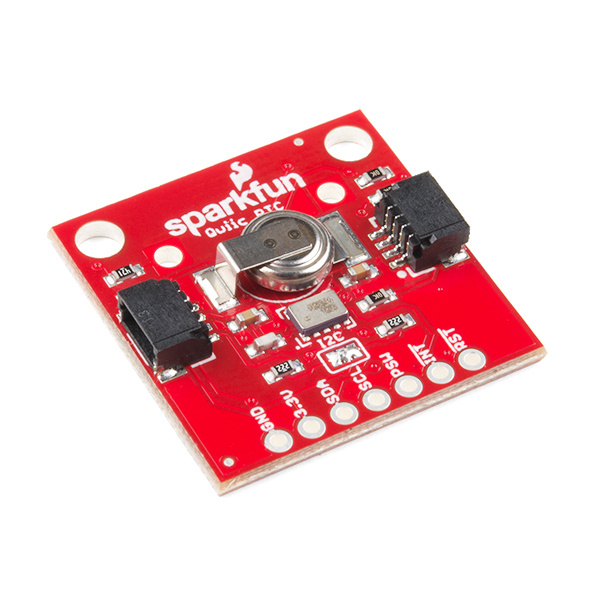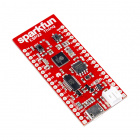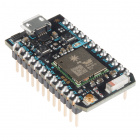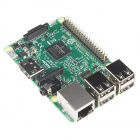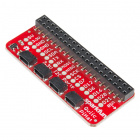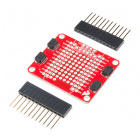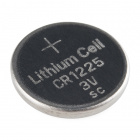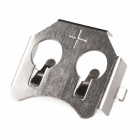Qwiic Real Time Clock Module (RV-1805) Hookup Guide
Introduction
The Qwiic Real Time Clock (RTC) module is a Qwiic-enabled breakout board for the RV-1805 module! The RTC is ultra-low power (running at about 22 nA in its lowest power setting) so it can use a supercapacitor for backup power instead of a normal battery. This means infinite charge and discharge cycles without any degradation to the "battery" (in this case, a supercapacitor). The breakout board is also a part of SparkFun's Qwiic system, so you won't have to do any soldering to figure out what time it is.
In this hookup guide, we'll take advantage of the Arduino IDE to automatically set the time of the RTC to the compiler time. Once we have the time set, we'll set the alarm to a time of our choice and have it generate a signal on the interrupt pin. We'll also look at how charged the RTC is so we know when to unplug the RTC from power (when it's full of course). Finally, we'll look at how to store other data into the RTC so we can keep important variables safe when our system loses power. We'll also go over how to extend the battery life of your RTC by adding an external battery.
Required Materials
To get started, you'll need a microcontroller to control everything in your project.
Particle Photon (Headers)
WRL-13774Raspberry Pi 3
DEV-13825Now to get your microcontroller into the Qwiic ecosystem, the key will be one of the following Qwiic shields to match your preference of microcontroller:
SparkFun Qwiic Shield for Photon
DEV-14477You will also need a Qwiic cable to connect the shield to your RTC, choose a length that suits your needs.
Qwiic Cable - 100mm
PRT-14427Qwiic Cable - 50mm
PRT-14426Qwiic Cable - 200mm
PRT-14428Qwiic Cable - 500mm
PRT-14429Finally, if your application requires that your RTC be without power for over a month, we'd recommend using the optional battery and battery holder to extend the time that the RTC will remain active without power.
Suggested Reading
If you aren't familiar with the Qwiic system, we recommend reading here for an overview.
 |
| Qwiic Connect System |
We would also recommend taking a look at the hookup guide for the Qwiic Shield if you haven't already. Brushing up on your skills in I2C is also recommended, as all Qwiic sensors are I2C.
